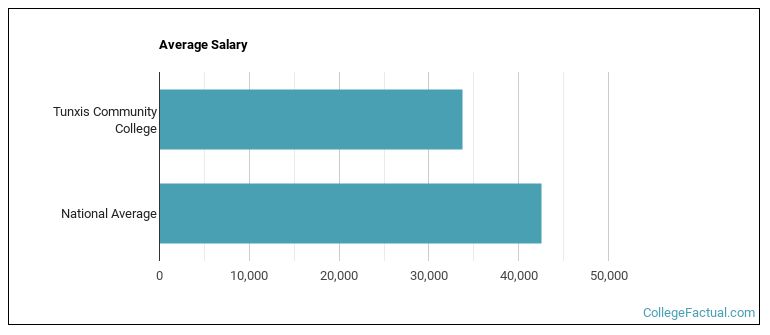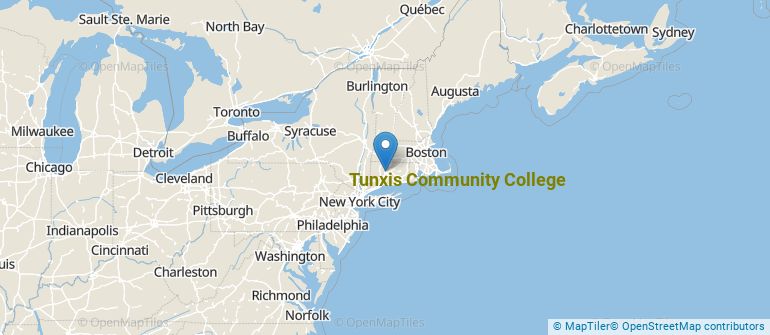 by our College Data Analytics Team
by our College Data Analytics TeamCollege Factual analyzes over 2,000 colleges and universities in its annual rankings and ranks them in a variety of ways, including most diverse, best overall quality, best for non-traditional students, and much more.
Tunxis Community College was awarded 25 badges in the 2024 rankings. The highest ranked major at the school is health professions.
Explore the best ranked schools for the programs you are most interested in.
Tunxis Community College is ranked #1,856 out of 2,217 schools in the nation for overall quality on College Factual's 2024 Best Colleges list.
Tunxis Community College is also ranked #27 out of 28 schools in Connecticut.
Since Tunxis Community College has an open admissions policy, being accepted to the school isn't that hard. However, a full basic things - such as a high school diploma or equivalent - may be required. Also, go over your application to make sure it is complete before you submit it.
The student to faculty ratio at Tunxis Community College is about average at 15 to 1. This ratio is often used to gauge how many students might be in an average class and how much time professors will have to spend with their students on an individual level. The national average for this metric is 15 to 1.
Another measure that is often used to estimate how much access students will have to their professors is how many faculty members are full-time. The idea here is that part-time faculty tend to spend less time on campus, so they may not be as available to students as full-timers.
The full-time faculty percentage at Tunxis Community College is 100%. This is higher than the national average of 47%.
The freshmen retention rate tells us what percentage of first-year, full-time students choose to continue on to their sophomore year at a particular school. The rate at Tunxis Community College is 63%, which is about average when compared to the national rate of 68%.
During the 2017-2018 academic year, there were 3,365 undergraduates at Tunxis Community College with 1,342 being full-time and 2,023 being part-time.
| $0-30 K | $30K-48K | $48-75 | $75-110K | $110K + |
|---|---|---|---|---|
| $7,028 | $7,159 | $7,067 | $10,105 | $12,200 |
The net price is calculated by adding tuition, room, board and other costs and subtracting financial aid.Note that the net price is typically less than the published for a school. For more information on the sticker price of Tunxis Community College, see our tuition and fees and room and board pages.
It's not uncommon for college students to take out loans to pay for school. In fact, almost 66% of students nationwide depend at least partially on loans. At Tunxis Community College, approximately 3% of students took out student loans averaging $5,338 a year. That adds up to $21,352 over four years for those students.
The student loan default rate at Tunxis Community College is 4.0%. This is significantly lower than the national default rate of 10.1%, which is a good sign that you'll be able to pay back your student loans.

See which majors at Tunxis Community College make the most money.
Get more details about the location of Tunxis Community College.

Contact details for Tunxis Community College are given below.
| Contact Details | |
|---|---|
| Address: | 271 Scott Swamp Road, Farmington, CT 06032-3187 |
| Phone: | 860-773-1300 |
| Website: | www.tunxis.edu/ |
Online learning is becoming popular at even the oldest colleges and universities in the United States. Not only are online classes great for returning adults with busy schedules, they are also frequented by a growing number of traditional students.
In 2020-2021, 2,620 students took at least one online class at Tunxis Community College. This is a decrease from the 3,299 students who took online classes the previous year.
| Year | Took at Least One Online Class | Took All Classes Online |
|---|---|---|
| 2020-2021 | 2,620 | 1,487 |
| 2019-2020 | 3,299 | 2,864 |
| 2018-2019 | 1,214 | 443 |
| 2017-2018 | 1,178 | 434 |
| 2016-2017 | 1,107 | 390 |
Learn more about online learning at Tunxis Community College.
Footnotes
*The racial-ethnic minorities count is calculated by taking the total number of students and subtracting white students, international students, and students whose race/ethnicity was unknown. This number is then divided by the total number of students at the school to obtain the racial-ethnic minorities percentage.
References
More about our data sources and methodologies.